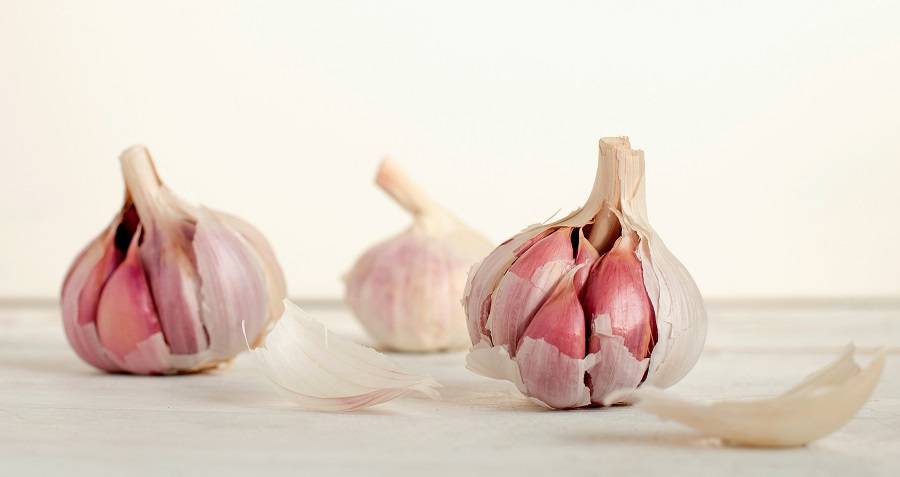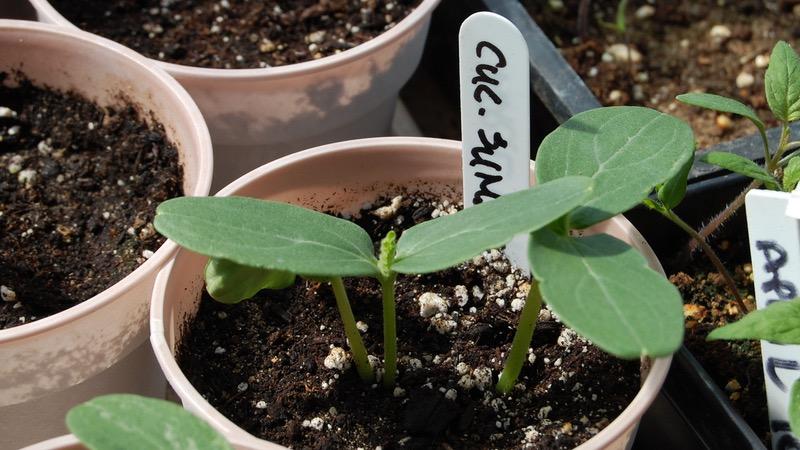Garlic 101
Fall is garlic-planting time. For most of us, with fall planting on our mind, thoughts turn toward tulips, daffodils, fall-flowering mums and flowering kale. But garlic? When the fresh crop of tulip bulbs arrives at your local garden retailer, in early September, you may notice that the garlic arrives too. You might love it or hate it, but there is no arguing that fall is the best time of year to put garlic in the ground. Growing garlic is oddly counter intuitive. You might naturally think of planting garlic when you plant your vegetables and herbs in the spring. The ancient herb is grown from a bulb or, to be more precise, a clove, which is broken off a bulb. In short, you plant the cloves in the fall, harvest the scapes early in summer, and harvest the bulbs in August.
Here’s how it works. Use bulbs that you either acquired from friends, the grocery store or a reliable garden supplier, and be sure of one thing: that they are locally produced. Retailers of garlic will tell you that you are smarter to grow “seed garlic” than any old garden variety of grocery garlic. Seed garlic is virus indexed, meaning it has been grown for the purpose of growing into more garlic, not for eating. It has been selected for its ability to grow virus-free and is therefore disease- and insect-free at the time of planting. The ones that you buy for eating will grow, but will they grow as well as the genuine seed-growing varieties? You might want to grow both side by side as an experiment. We grow the variety ‘Music’. It’s not the largest or flashiest variety, but it’s very winter hardy and dependable—the Studebaker of garlic. It has a great taste; any Chinese or Argentine garlic is a very distant second in taste to fresh local garlic.
Soil
Prepare the growing area for garlic as you would potatoes and other sun-loving root crops. Carrots, onions, beets and the like enjoy an open, sandy soil. Garlic being one tough customer can be grown in enhanced clay-based soil by adding generous quantities of sharp sand. Spread the sand about 6 cm (2 1/2 inches) deep and turn it under several times with a garden fork until the sand-clay soil mix is thoroughly blended together.
If you have reasonably good-quality soil, add generous quantities of compost or composted cattle manure to enrich the natural nutrients of the soil.
Carefully peel off the cloves from each bulb; try to keep the papery layer intact on each clove, as it adds protection while the clove puts down roots through fall. Make a trench in the soil about 6 cm (2 1/2 inches) deep and drop each clove into the soil about 20 cm (8 inches) apart. The rows should be about 50 cm (1 1/2 feet) apart.
Plant with the pointy side up. Firm each clove into the soft, open soil. Once the cloves are planted, push the soil into the trench and step on it gently with your boots. Walk gingerly up the row, heel to toe, until you reach the end. This ensures that the soil is in firm contact with the bulb and creates a trench that will catch the water when you apply it.
Water generously at first. Then let the soil become dry to about 3 cm (1 1/4 inches) deep between watering. Depending on rainfall, you may not have to water the garlic patch again until late spring. If garlic is overwatered, it is prone to rot.
Before the hard frost of November and early December, your new garlic will start to poke through the soil, giving you a hint next spring of where it is located. Mark the row with a large sign that will not blow away, and mulch each row with 30 cm (12 inches) of fresh straw before winter.
Harvest
Come spring, the best thing you can do for your garlic is to keep the weeds out of the patch. Garlic does not like competition any more than your petunias do. In early July, the plants will produce remarkable pig tails, called scapes, which are entirely edible and quite expensive at the farmers’ market. Cut off the scapes and use them (or not). By removing them, you increase the size of the garlic bulbs that you harvest later in August.
Dig (don’t pull) up your garlic in late August, lay it out in the sun for a day or two, and then store it in a shaded area with good air circulation for two to three weeks. Do not store in the direct sun, as this will bleach the colour of the garlic and affect the flavour. Handle them gently, since they do bruise easily. After storing the garlic for a couple of weeks in a shaded, cool place with good air circulation (like your garage), cut the stems off and store the bulbs in well-ventilated containers in a dark, cool place. The bulbs will remain “fresh” until about April.
Once you have tasted garden-fresh garlic, you will not want to go back to the grocery variety.
Mark Cullen is an expert gardener, author, broadcaster and tree advocate
and holds the Order of Canada. His son, Ben, is a fourth-generation
urban gardener and a graduate of the University of Guelph and Dalhousie
University in Halifax. Follow them at markcullen.com, @MarkCullen4
(Twitter) and @markcullengardening (Facebook) and look for their latest book, Escape to Reality.
Follow them at markcullen.com, @MarkCullen4, facebook.com/markcullengardening and biweekly on Global TV’s national morning show, The Morning Show.













